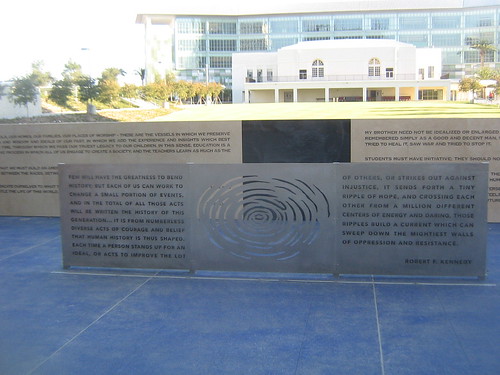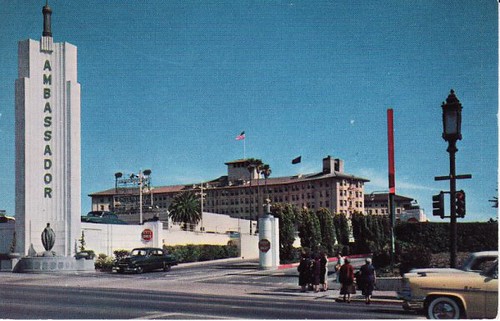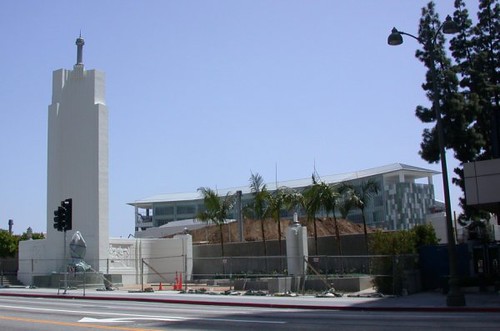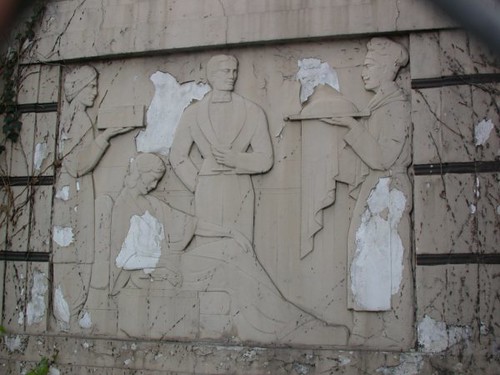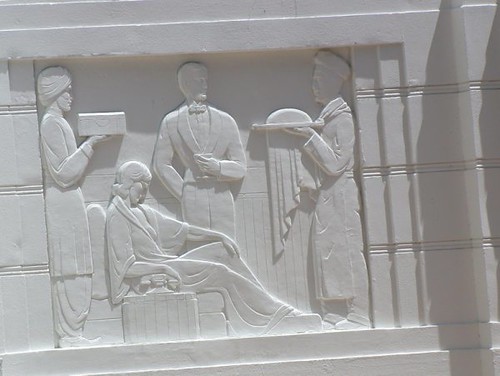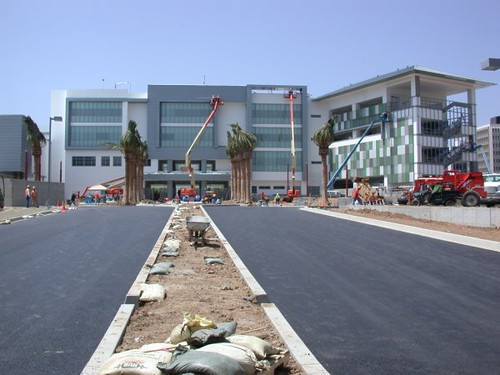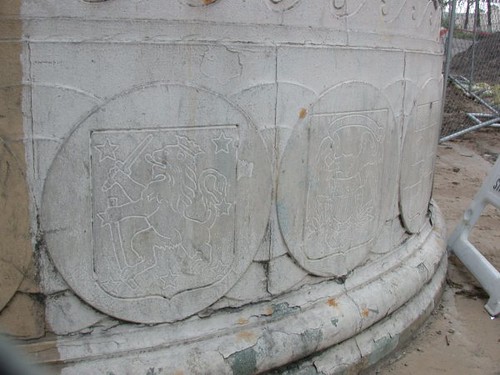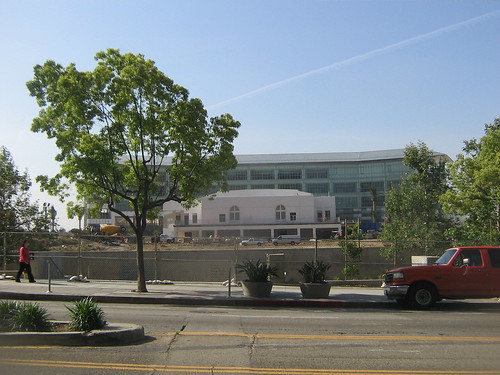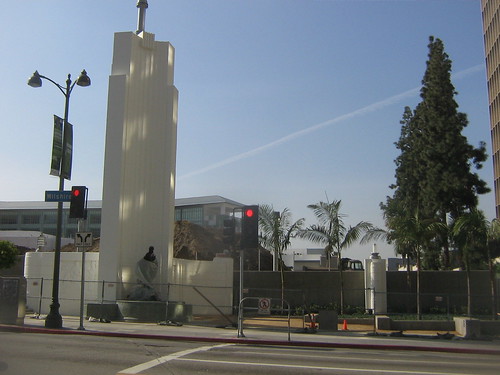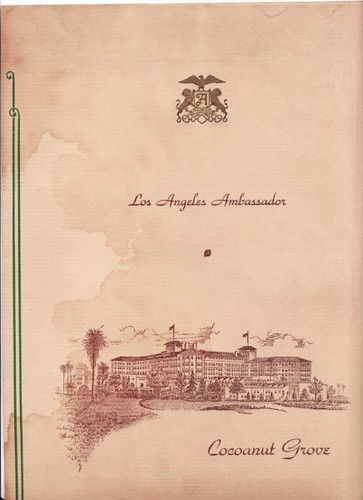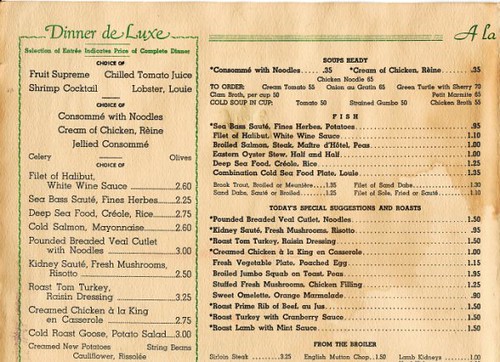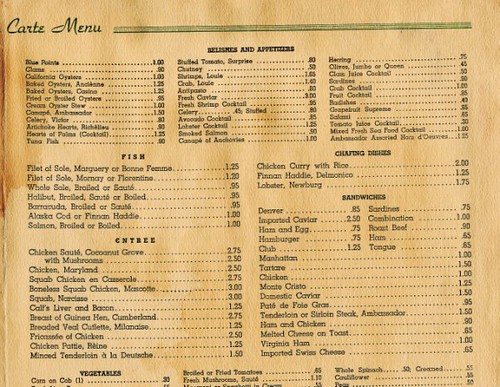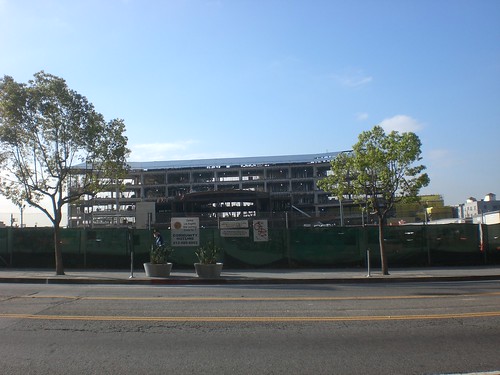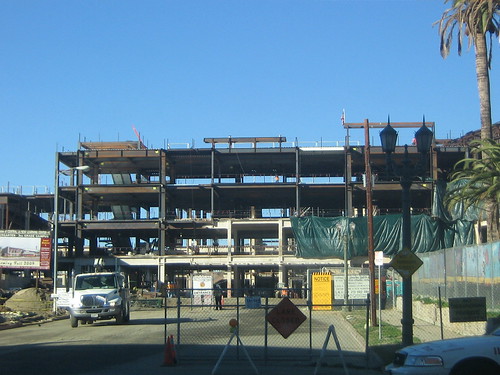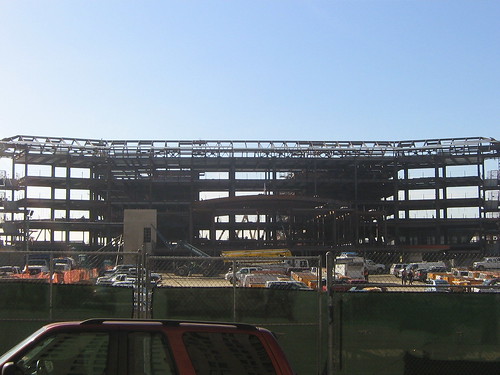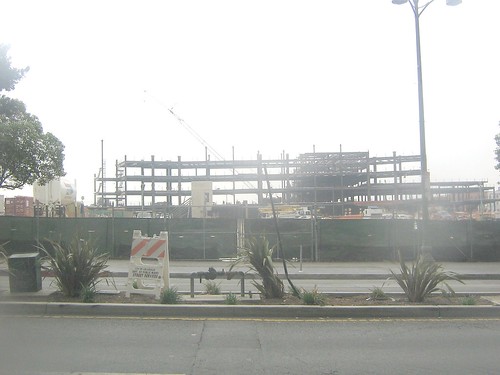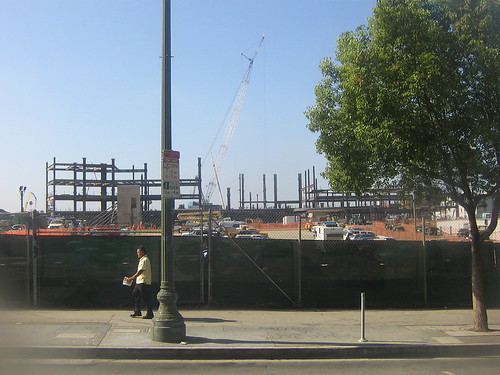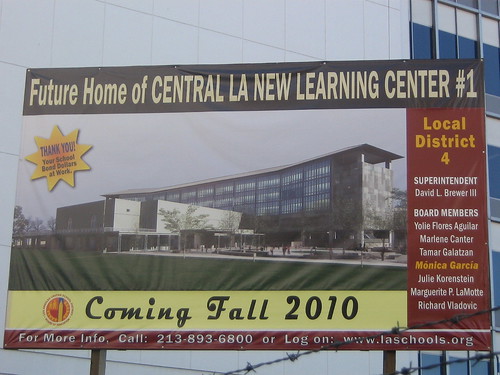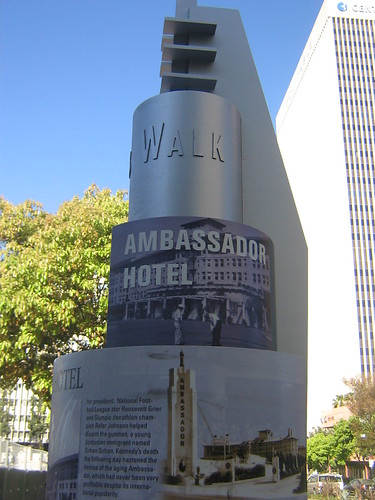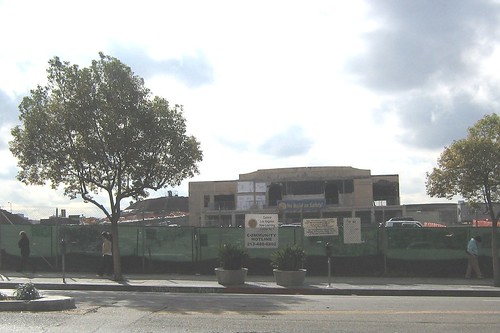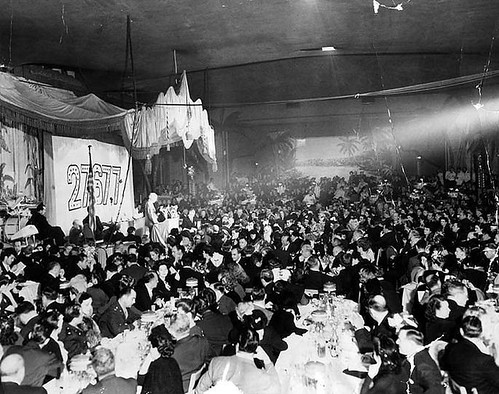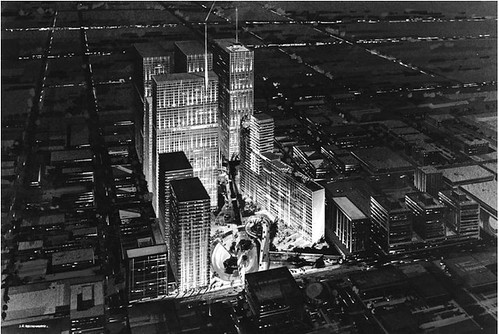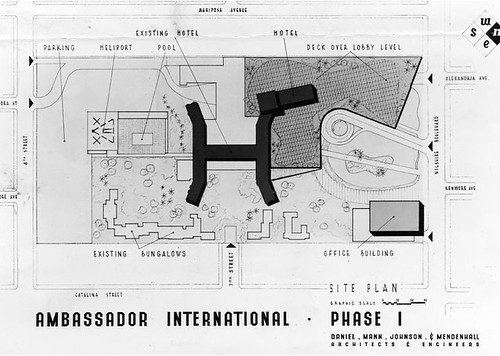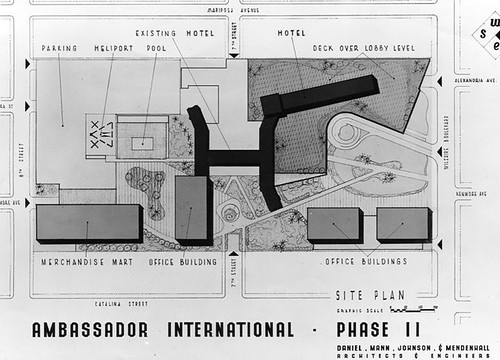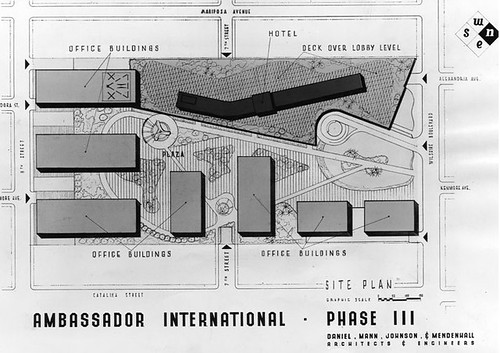Amabassador Cam: Robert F. Kennedy Schools and Pocket Park Finally Open

The LAUSD is finally taking down that ugly chain link fence in front of the Ambassador Hotel site -- making the new street-level "Robert F. Kennedy Inspiration Park" open to the public.
The new park is unveiled just as the long-in-the-making Robert F. Kennedy Community Schools complex officially opens its doors today.

The new schools, which sit on the land where the Ambassador Hotel once stood -- have been controversial, and not just because of how the hotel was razed. The Wall Street Journal just wrote a scathing editorial on the complex's price tag, including the park (pegged at $4.9 million).
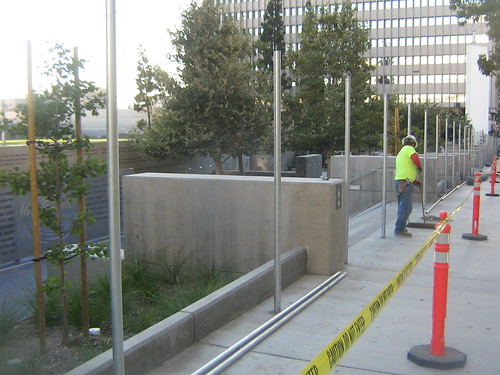
Here's how LAUSD describes the park, via the Wilshire Center Business Improvement District:
The Kennedy Inspiration Park occupies a 19,000-square-foot section of the site fronting Wilshire Boulevard. The park slopes downward from the busy street, preserving views of the school buildings from the street, terminating in a focal stainless steel wall designed by artists May Sun and Richard Wyatt. The rectangular sheet is etched with an image of Robert F. Kennedy in sandstone and displays an array of inspiring quotes from champions of social justice. The idea is to create a space that encourages contemplation of Kennedy's legacy of social justice. The park also provides spaces for eating lunch, playing chess and quiet contemplation.
